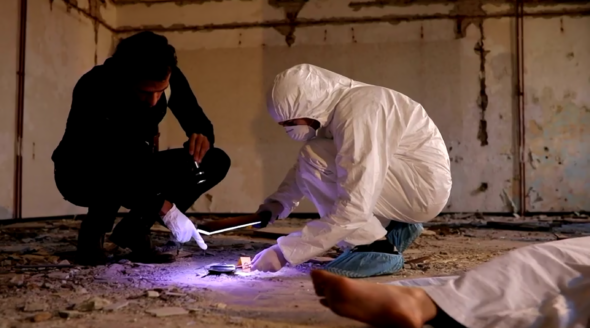A mechanical wristwatch is a complex piece of machinery. The average wristwatch contains over 130 components, each perfectly calibrated to work in time with everything else. When everything is running smoothly, these machines can tick away the time with both elegance and precision.
Of course, these watches aren’t perfect. Even the best mechanical watches lose a few seconds every month without proper adjustments. What’s more, every mechanical wristwatch contains four essential components that can completely compromise the system if damaged or misaligned — the mainspring, gears, pendulum, and escapement mechanism. Without them, your watch stops ticking.
The same could be said for your working culture. It CAN be an elegant thing that supports and inspires success for everyone. But if you make mistakes when dealing with the most essential components of your culture, your company’s working environment becomes a broken wristwatch. It might still tell the time, but your faith in what it says is damaged forever.
So what are those mistakes? How can leaders damage their working culture in a way that keeps it from working altogether? Let’s talk about the four ways even well-intentioned executives can unknowingly keep their company’s watch from ticking.
1. Refusing to set the example.
Did you know that songbirds don’t naturally develop their talent for vocalization? Each bird has a role model who teaches them specific songs and helps to develop their vocal strength. When that role model is absent, the younger birds become “songless” and often struggle to find a mate and become part of their own social network. Ultimately, if a whole generation of older birds were lost, that avian “culture” would be irreparably damaged.
If you’re a leader, you’re a role model. There is simply no getting around it. The example you set as an executive is critical to your organization’s working culture, which means refusing to set an example can be just as impactful. A recent survey revealed up to 70% of employee behavior is influenced by the role modeling they receive from their leaders. So it stands to reason that if you’re not modeling the right songs to your team, you shouldn’t expect them to start singing in tune.
How to set a shining example:
- Get involved. Don’t shy away when your team gets excited.
- Collaborate constantly. Don’t expect teamwork and not show it.
- Show flexibility. Don’t be rigid when you need a team that’s pliant.
2. Using control instead of influence.
Evolution feels like a lofty idea. To the average person, it hovers somewhere outside our control, exerting its influence in much the same way that it has for millenia. However, did you know that humans are now arguably the greatest evolutionary force on the planet? From hunting and fishing to agriculture and modern medicine, we are very much at the wheel of our own world’s evolution, and this isn’t necessarily for the best. When does influence turn into control, and why is that a bad thing?
If you want to build and sustain a new working culture, it needs to be a product of your team — not you. As a leader, you can create an environment that naturally encourages and discourages certain behaviors. You can actively participate in the process, and you can justly reward those who do the same. But you can’t forcefully forge a working culture that’s supposed to be rooted in values. That’s like forcefully putting the cart before the horse. You have to consistently project those values into the group and gently guide their influence.
How to tell the difference:
- Control serves you. Are you trying to “get” the right behavior out of others?
- Influence serves others. Are you allowing others to see your behaviors and respond?
- Control is about results. Are you prioritizing the results you demand to see?
- Influence is about culture. Are you prioritizing the working environment you create?
3. Focusing on process over people.
A new commercial airliner can cost well over $200 million. They contain advanced computing platforms for high-bandwidth communication and continuous data exchange. The latest airliners even use fully electric brakes that can be constantly monitored for fault detection. That said, these technological marvels are still fully dependent on a skilled pilot, so building an airliner without respect and accommodations for the person who makes everything possible would be a complete waste of time.
If you’re taking a closer look at your company’s working environment, a people-first culture is an absolute priority. Why? Because how you treat each other inside the walls of your organization is inevitably a direct reflection of how you treat your potential clients. In fact, people-first organizations report 22% higher productivity and 30% higher customer satisfaction. Simply put, if you provide for your employees, they will provide for your customers.
How to put people first:
- Seek out feedback. Don’t just say you want everyone’s opinion. Set aside time for it.
- Celebrate others publicly. Don’t just recognize hard workers. Sing out their praises.
- Align the entire organization. Don’t put people first once. Make it your mantra.
4. Acting without a conscious plan.
Imagine you’re building a house — your dream house. This is going to be a lifelong residence that brings happiness to you, as well as your family and friends. Excited to break ground, you start building the very first room. A few weeks later, the room is beautiful and everything you imagined.
You have similar success with every room you set your sights on, and you start to eagerly anticipate where everything is headed. At the end of three months, you’re left with a beautiful collection of meticulously designed rooms — but no house. Without a blueprint to work from, the rooms do not fit together to make anything that could be called a home.
The culture you desire is absolutely possible. But you can’t build it without intention. Are you forming a plan to create the working culture your organization needs? Write it down. When you have a blueprint to follow that is fully aligned with your core values, you’re a lot less likely to build a series of disjointed rooms. Instead, you’ll build a cohesive and beautiful house to keep your values safe and secure.
How to lead with intention:
- Craft a compelling vision. Give your team a mission worth following.
- Stop withholding information. Sometimes, a lack of transparency is a simple oversight.
- Give crystal-clear directions. Stalling and re-working are the direct result of ambiguity.
Written by Dr. Sam Adeyemi.
Have you read?
Best countries for hiring freelancers.
Highest Paid Big Pharma CEOs And Top Executives.
Best Websites For CEOs, business leaders, and high-net-worth individuals.
Best Executive Search Firms And Consultants in America.
Revealed: Most Powerful Women In The World.
Add CEOWORLD magazine to your Google News feed.
Follow CEOWORLD magazine headlines on: Google News, LinkedIn, Twitter, and Facebook.
Copyright 2024 The CEOWORLD magazine. All rights reserved. This material (and any extract from it) must not be copied, redistributed or placed on any website, without CEOWORLD magazine’ prior written consent. For media queries, please contact: info@ceoworld.biz
























































![Key Metrics for Social Media Marketing [Infographic] Key Metrics for Social Media Marketing [Infographic]](https://www.socialmediatoday.com/imgproxy/nP1lliSbrTbUmhFV6RdAz9qJZFvsstq3IG6orLUMMls/g:ce/rs:fit:770:435/bG9jYWw6Ly8vZGl2ZWltYWdlL3NvY2lhbF9tZWRpYV9yb2lfaW5vZ3JhcGhpYzIucG5n.webp)


















